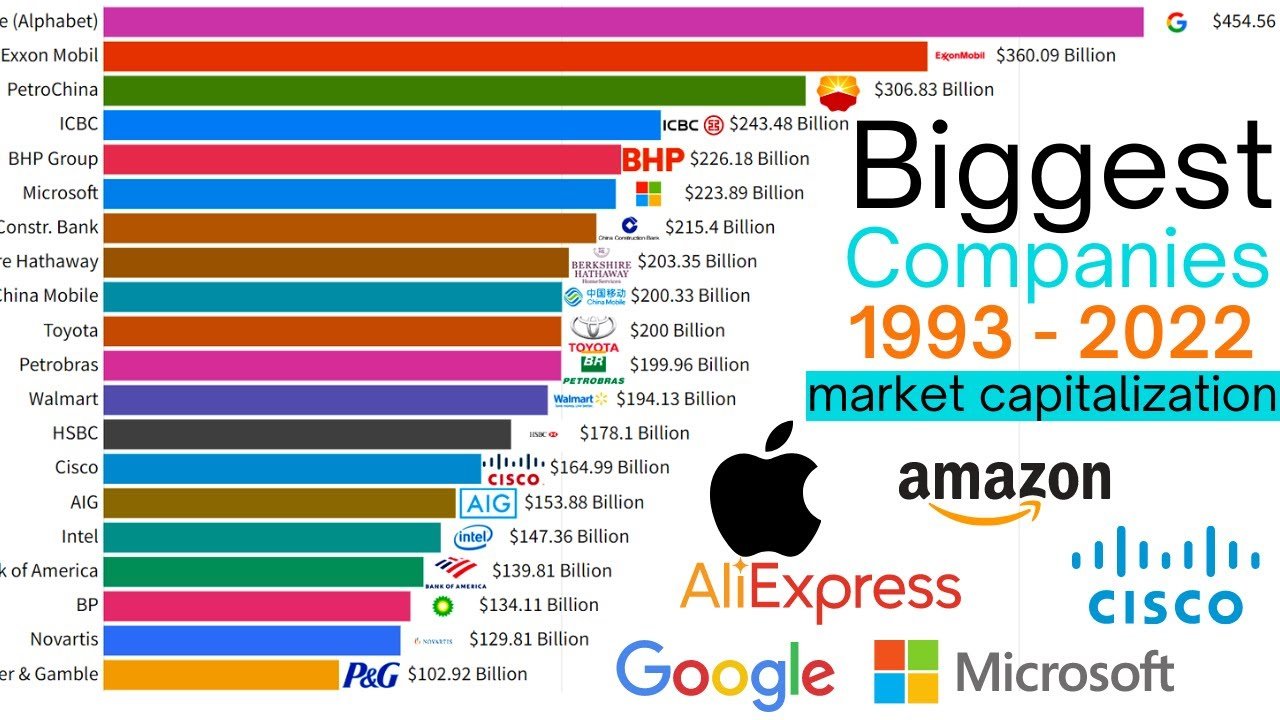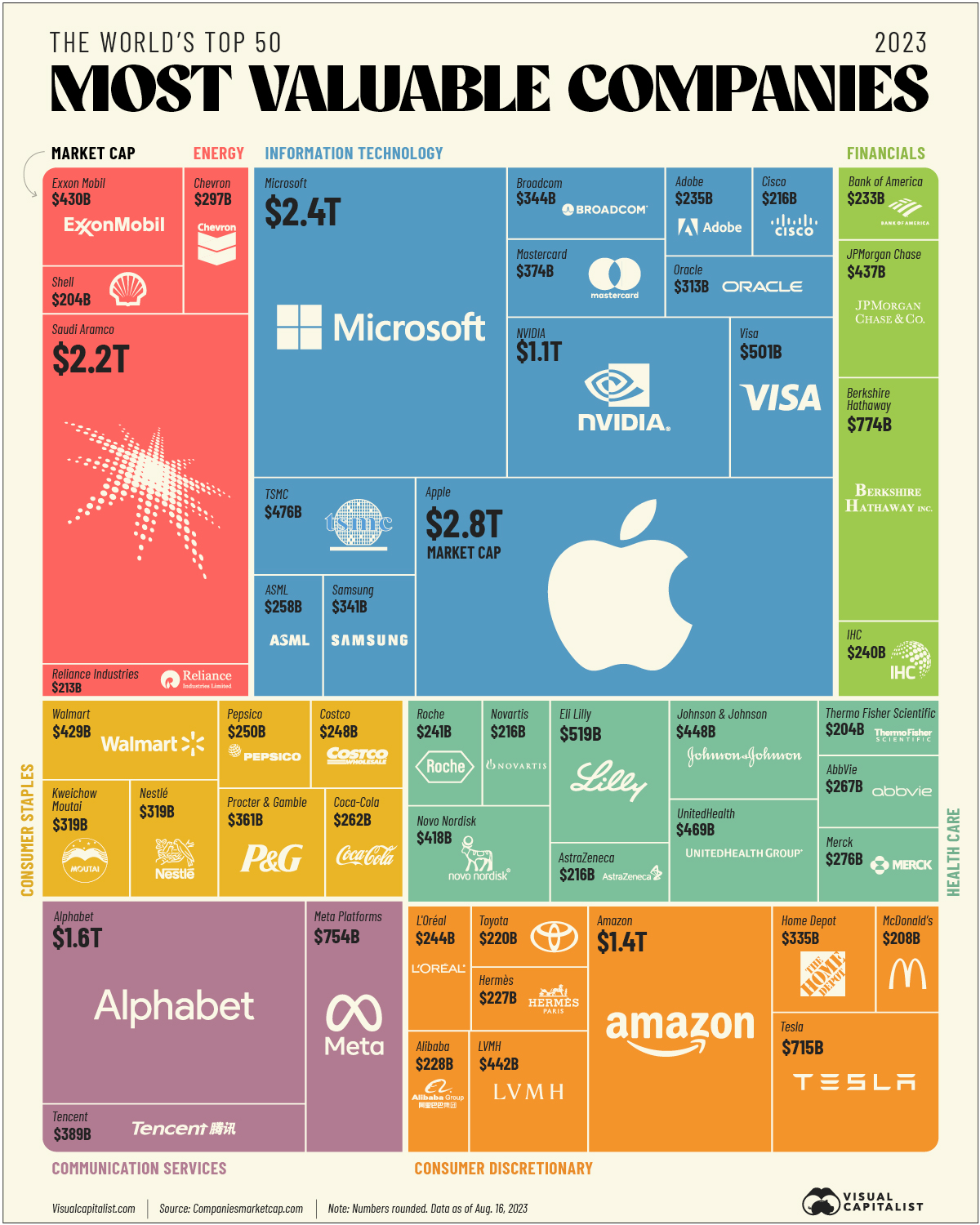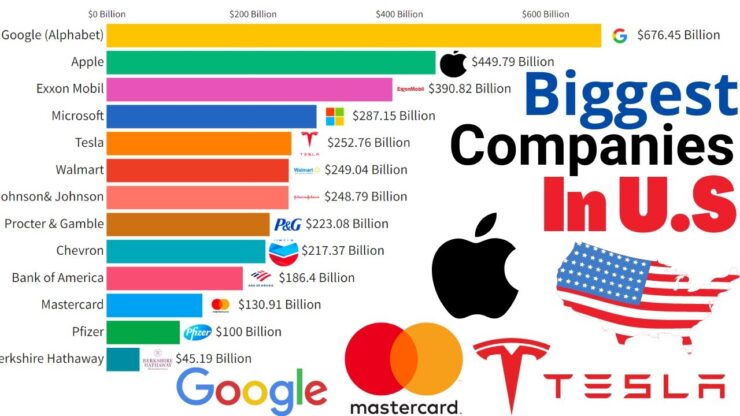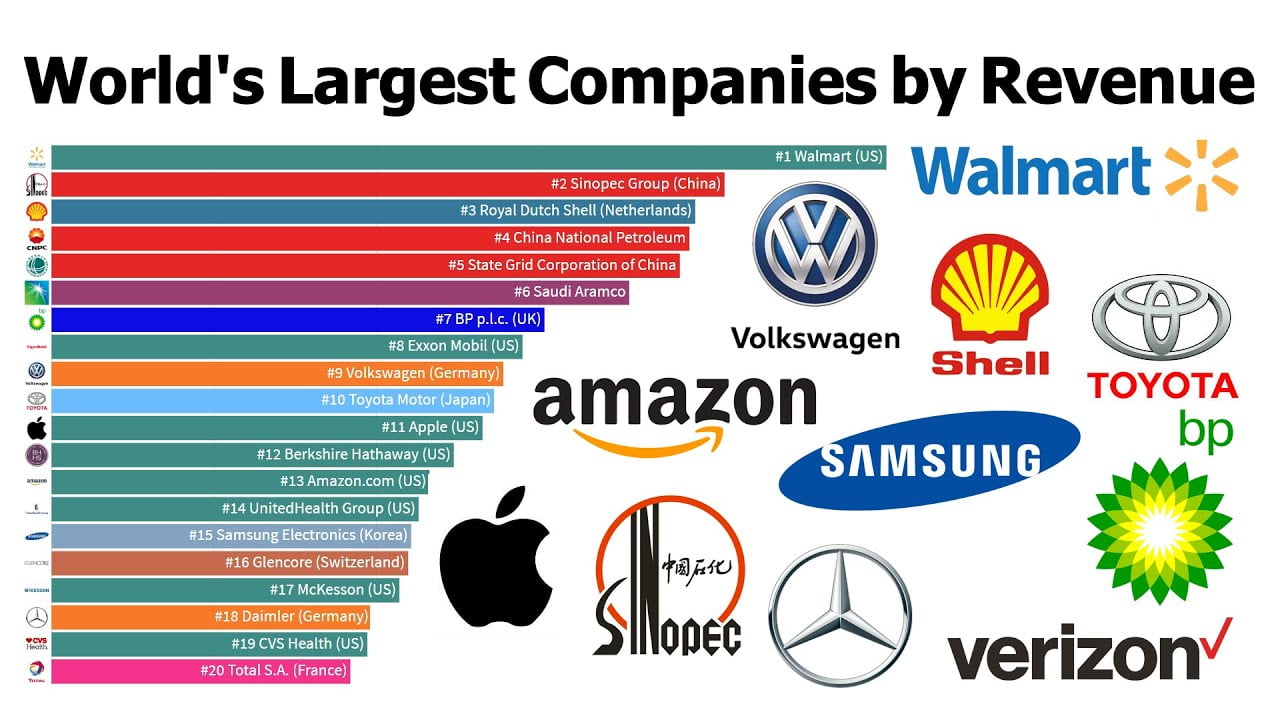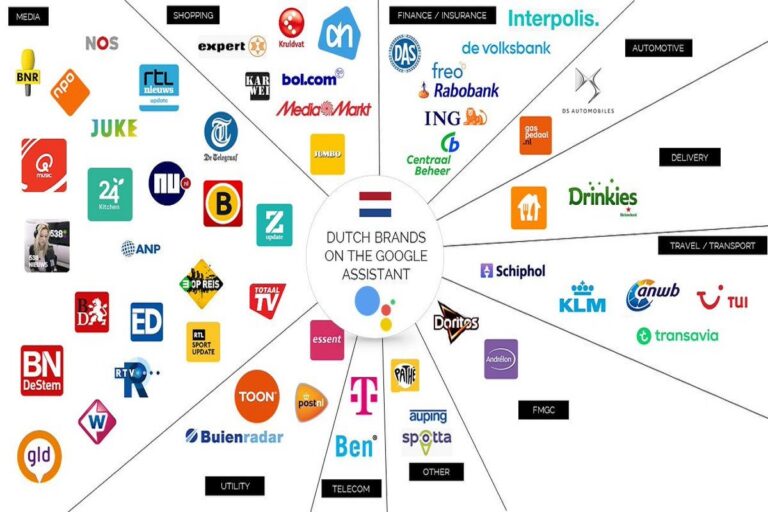Top industrial companies from the netherlands as of jan.$297.10 b netherlands dutch technology:
As a group, the companies on the 2023 list account for $51.7 trillion in sales.Sgs was ranked 6th out of 500 corporates globally and holds the number one position in the testing, inspection and certification sector.Only the top dutch companies are shown in this list and companies that are not publicly traded are excluded.
This list is based on the forbes global 2000, which ranks the world's 2,000 largest publicly traded companies.the forbes list takes into account a multitude of factors, including the revenue, net profit, total assets and market value of each company;Top retail app development companies are instrumental in transforming the retail landscape through innovative solutions and technological advancements.
$297.10 b netherlands dutch technology:This is the list of the largest companies of the netherlands by market capitalization.Simply wall st growth rating:
Christina miller banking and finance february 12, 2024.Top technology companies from the netherlands as of jan.
Operates as a postal and logistics service provider in the netherlands, across europe, and internationally, with a.No airlines from the us made.Amsterdam is the 35th most popular location globally to start a company or startup and ranks 1st in netherlands.
Adriaan mol, bob violier, robert vis.B.c.'s biggest companies by industry.
Last update images today Top 100 Companies In Netherlands
 Leverkusen To Resume Unbeaten Run Vs. Gladbach
Leverkusen To Resume Unbeaten Run Vs. Gladbach
GREENSBURG, Penn. -- When COVID-19 shut down the world in the spring of 2020, Kevin May was like most coaches. He was bored.
He'd been hired as the defensive coordinator at Division II Seton Hill a year earlier to match his unique scheme -- the flex -- with a team in need of a massive upgrade.
The initial results were predictably mixed. There was some mild success, but the system was new, and players often struggled to get a handle on it. Then COVID-19 put it all on hiatus, and May, an avowed football nerd whose wife, Shelby, jokes that the sport is his lone passion, found himself needing something to do.
"So we went to Lowe's," he said, "and bought a bunch of white boards."
If necessity is the mother of invention, boredom might be its father, and what May invented during COVID might now be the most dynamic, aggressive and confounding scheme run by any team in the country.
The flex is run by only a few other teams at any level these days. May learned it at Wyoming from longtime coach David Brown in the early 2010s. It's complex, it's confusing for offenses, and, as Brown and other originators of the system often scolded, it's not to be changed.
"I was always told," May said, "never to mess with grandma's recipe."
But in the spring of 2020, there was no football, May's house was littered with playbooks and drawing boards, and there was grandma's recipe, just waiting for some new ingredients.
At its core, it's a system designed to disguise the defensive front, often with one or no down linemen, and nearly always more defenders in the box than the offense can match. But the flex, as it originated, also had its weaknesses, particularly a reliance on man coverage on the back end. May figured he could add some layers to the base system, so he started studying. He devoured textbooks, talked with offensive coaches about their blocking schemes and watched online clinics on YouTube, sometimes at 4x speed, looking for any small detail he could exploit in his new system.
In short, May learned the rules everyone else followed, then designed a defense that broke nearly every one of them.
"The smartest guys we have in the room go against this for four years," said Daniel Day, Seton Hill's head coach and O-line coordinator, "and they still say, 'I don't know what they're doing.'"
Since returning from the COVID shutdown, May's defense has taken Seton Hill from the dregs of Division II football to something at least approaching contention.
Seton Hill is a small Catholic school about 35 miles southwest of Pittsburgh, with an enrollment of less than 1,700. In 2018, the year before May arrived, the Griffins ranked 157th in Division II in scoring defense, 159th in rush defense and 152nd in sacks. After the team returned from COVID in 2021, Seton Hill finished the season 27th in scoring defense, ninth in rush defense and nearly tripled its sack total. Three years later, May's defense has had back-to-back conference defensive players of the year, an All-American linebacker, and in 2023, was fifth among all D-II schools in sacks and tackles for loss. In the two years before May arrived, Seton Hill had a combined 1-21 record. Last season, the Griffins finished with a winning record for the first time in 15 years. More astonishingly, the bulk of players responsible for this success began their careers at Seton Hill as walk-ons.
And yet, entering his sixth year at Seton Hill, May's system largely remains relegated to this sleepy outpost in Western Pennsylvania, as bigger schools calculate the risk-reward of trying something so outside-the-box and continue to prefer the status quo to a big swing.
"It blows my mind that people don't want to run this," Day said. "If you ran this at Alabama, with the best of the best, I don't know how you'd stop it."
MAY IS CERTAINLY not the first coaching savant to try to disrupt the mainstream approach to Xs and Os.
Mouse Davis and June Jones created the run-and-shoot at Portland State in the 1970s, then saw the system flourish in the NFL a decade later. Hal Mumme and Mike Leach refined the Air Raid at Iowa Wesleyan and Valdosta State before it became an offensive staple at every level 25 years later. More recently, Zach Kittley took Air Raid principles to develop his own scheme at Houston Baptist, then helped Bailey Zappe rewrite the NCAA record book at Western Kentucky.
"You have to have people above you that have some idea what they're looking for and courageous enough to actually go through with it," said Hal Mumme, the originator of the Air Raid offense who spent the early years of his career toiling in Division II, waiting for a chance to prove his system could work anywhere. "I had to do it at lower levels like that because nobody would hire me to do it at a higher level."
Even those who haven't rewritten the book at higher levels -- Kevin Kelley (never punt) and Bob Stitt (West Coast offense with a twist) -- have seen at least portions of their playbook copied in the modern game.
What's unique about May is that he has gotten little fanfare despite a scheme that begs for attention and, unlike all those other coaches, he's doing it on defense.
"There's been innovative guys," Mumme said. "There's just not quite as many as there are on offense. Defensive guys tend to be more traditional."
Traditional, in this case, might be a synonym for risk averse. On offense, taking shots for big payouts is simply part of the DNA of most coaches. If it hits, the replay ends up on SportsCenter. If it doesn't work out, well, there's always the next play or next series. On defense, the formula is usually reversed. It's the busts that get talked about by angry fans and shown on the other team's highlight package.
But May disagrees with the entire premise. His version of the flex isn't high risk, high reward. He prefers to think of it more like the triple option, but for defense -- a plug-and-play scheme that virtually anyone could run with success, but yet still so outside the norm that other teams struggle to prepare for it.
"This is the first defensive system I've ever seen that does dictate [to the offense]," Day said, "because it just breaks so many rules."
A version of the flex was popularized in the 1970s and 1980s by former Dallas Cowboys head coach Tom Landry, whose own players often complained about its inscrutability despite the team's dominant performance. Dick Tomney's Arizona Wildcats ran a flex with Tedy Bruschi in the 1990s with great success, too. But the flex had largely fallen out of favor at the highest levels because it inverted nearly all of the pillars of typical football Xs and Os.
That's exactly what May liked about it.
"We have non-traditional players aligned in spots where they normally don't align, and they have the ability to do a lot of non-traditional things," May said. "Every offense has a playbook with all different looks they're likely to see. They're not going to see a picture of our defense in there."
In their base alignment, the nose tackle has his hand on the ground, and two other defenders are standing just off the line of scrimmage with two "flex" linebackers standing about a yard back. Those are the wild cards who can do virtually anything. Two more linebackers are standing about five yards off the ball. Three DBs are lined up across from a receiver, and one safety is deep. Any one of the seven players near the line could blitz. Six of them could drop into coverage, too. And May will show that same front and run an array of plays out of the same look. Often, he'll call a play he knows won't work early in the game just to see how the offense reacts, setting the stage to call something different from the same package later in the game. It's chess when most offenses are stuck following the rules of checkers.
Rarely a game goes by, Day said, when some opposing offensive coach doesn't approach him in the handshake line, shaking his head and muttering about how glad they are to not face May's defense again until the following year. One O-line coach last year admitted in pregame warm-ups that he had absolutely no clue how to block Seton Hill's front.
"And we hadn't even played the game yet," Day said.
In his first season as QB coach at Mercyhurst in 2022, Eric Acciani thought he had a good plan to beat May's flex. The system relies on a lot of man coverage concepts, and Mercyhurst had its share of receivers Acciani thought could win a one-on-one match-up. He schemed that week entirely around exploiting those mismatches on the outside.
Mercyhurst was sacked eight times and failed to score.
A year later, Acciani had completely reconsidered his approach. He'd spent hours during the offseason focused exclusively on Seton Hill, and after being battered in the trenches the last time, he was now certain the key to a win was taking away the Griffins' pass rush. The game plan was built around 10 personnel -- with four receivers on the field -- and prioritized getting the ball out of the QB's hands as quickly as possible.
"We thought we had a really good handle on it," Acciani said, "but Kevin made a couple adjustments and, again, we didn't score."
Two years, two completely different approaches on offense, and two shutouts.
This is, perhaps, the true genius of the scheme. The offense retains the illusion of dictating the action, but May's already thought three moves ahead.
THE QUESTION POSED to Seton Hill rover Quinton Posey is fairly straightforward. May's scheme is all about disguising fronts and adjusting on the fly, so what, exactly, goes through Posey's mind pre-snap as he makes his reads and decides what adjustments to make?
"Well, we have a lot of keys," Posey said. "I mean, I also cover a lot, too. I might line up on a receiver playing man. Also, I blitz a lot."
In other words, it might be easier to ask Posey what he isn't thinking about pre-snap.
And herein lies one of the key concerns with May's system: It's simply too complicated. Posey says when he first arrived as a freshman, coming from a high school system he called "pretty simple," it was a water-from-a-firehose situation. It was a year, maybe 18 months, he said, before it started to click.
May slots each of his players into categories: One-, two-, three- and four-dimensional players. The lowest level guys are still figuring out the nuances of their specific position. The two-dimensional players understand their whole position group. Three-dimensional guys grasp the entire defense, and the top tier are the key veterans, who not only know everything May's defense wants to do, but just about everything the opposing offense is trying to do, too.
When May first arrived at Seton Hill, Day asked for a list of height and weight requirements at each position group for recruiting purposes. May didn't have one.
His goal on defense isn't to get guys who look the part. He wants guys who can play the part, guys who, after a year or two, will be three- or four-dimensional.
At its core, May's defense functions like an algorithm, full of if/then commands that usually rely on the same basic underpinnings but with minor changes based on the look the offense presents. Each player has his set of rules and responses, refined over time, and when it's all clicking, those players who barely sniffed a Division II offer elsewhere look like absolute superstars.
"Watch all 11 guys one by one and you probably wouldn't feel so worried about it," said Ancini, now the offensive coordinator at Tennessee Tech. "But then you watch them execute together and how they play off each other, they just do such an incredible job and it's different than anyone you play against. It's really simple for them but as an offensive coach, you've got to spend a lot of time on them."
Take that age-old problem of leaving your DBs in man coverage. This is the part that terrifies most DCs. A corner alone is a corner waiting to get beat.
But that's not how May's system works. The defense often presents as man coverage, but in reality, players in the box can drop into coverage, and at least two defenders will always have eyes on the QB, offering help underneath or over the top. Every DB understands where his leverage is and when to pass off a coverage to another defender, meaning he's usually just responsible for covering half the route tree. And, perhaps just as importantly, the defenders dropping into coverage, the leverage, and the route tree a DB needs to cover -- it varies from snap to snap, and the opposing QB can never be quite certain what he's seeing before snapping the ball.
"He's got such an incredible understanding of what offenses do," Ancini said. "Offenses are built to find a weakness, so here's how we play it. A lot of coaches have that knowledge but he does the best job of having his kids know that as well. They're always very dialed in. Everyone on that defense is always on the same page. A lot of coaches have really good ideas but they can't communicate with their players like Kevin can."
If there's a secret ingredient that makes the whole thing work, that's it. May is an Xs and Os nerd, but more than that, he's a coach who simply loves his players.
Seton Hill's signature set piece on defense is a battered trash can -- "the takeaway can." The can is emblazoned with the words "Code Red," the defensive mantra that applies to all position groups. It was May's wife's idea. She donated it to the team in 2019, and it has been through some wars.
"It's broken and battered and sharp, and we've got to put duct tape on it," May said. "But I love it."
After every takeaway in practice or a game, a player gets to dunk the team's special "code red" football, then signs his name onto it. Whoever has the most signatures at year's end gets to keep the ball at the team's awards banquet. The team loves it.
But it's not just a takeaway gimmick like Miami's turnover chain or Oregon State's chainsaw. It's part of a larger philosophy of team building. Watch the game film, and it's easy to see how much fun the players are having on defense, but what's missed from the all-22 copy is what happens when a play ends.
After a defensive player makes a big play in practice, Day has instructed his camera crew to stay trained on the defense and capture the aftermath: Players dancing, celebrating, jumping into each other's arms. It's a party. Day remembers a few early practices with first-year offensive coordinator Blaise Holzer when he had to keep his new coach from going ballistic in frustration from the defense's seemingly overzealous celebrations, reminding Holzer, "you're going to love this on Saturdays."
"You won't see anyone practice the way we do anywhere at any level," Day said. "But it's all because Coach May's biggest aspect to the players is you celebrate together. It's not just the plays, but how we practice, the culture he's built to allow these dudes to have some fun."
MAY IS SKIMMING through some film, showing off a few of his favorite plays. There's one where he has seven defenders in the box, but only his nose tackle has his hand in the dirt. Both Seton Hill's flex defenders are lined up on the same side of the ball. The offense is clearly flummoxed. The QB looks to the sideline then checks into a new play. May's D immediately checks, too. The center turns around and yells to the quarterback. Neither has any clue what's happening. The ball is snapped. Two box defenders drop into coverage. The center and guard pull -- in the wrong direction it turns out. The nose tackle has a free line to the QB for a sack.
"My favorite picture in America," May said, "is two or three offensive linemen blocking nobody, and the quarterback getting sacked."
He freezes the film and, sure enough, there are three offensive linemen doing the football equivalent of the mime-in-a-box routine.
There are drawbacks to all this, of course. Day notes that practice can be tricky, because his offense can't simply work against his D, because the offense will never see anything that looks like this defense all year. For Seton Hill, the scheme has been a boon for recruiting because the Griffins don't need stars. The scheme can make anyone a star. But at the higher levels, unique schemes can scare away top recruits. That was always the knock on the triple option. And while it's a joy to watch opponents try to figure out what they're seeing each week, there's a genuine challenge in ensuring all the guys playing D at Seton Hill know exactly what they're doing at all times.
And yet, draw up a list of pros and cons, and Day eagerly pronounces a clear verdict for his team. Seton Hill is better -- much better -- because of May's defense.
It's not unlike what Mumme and Leach faced early in their careers. They were different, and it was safer to lose looking like everyone else than to roll the dice on something completely new.
But the Air Raid kept working, and eventually, more people began to believe.
That's May's hope. The film speaks for itself, and all the risk aversion in the world can't trump the bottom line. The system works. Eventually, others will follow.
How can May be sure?
Way back when May first got to Wyoming as a graduate assistant, he was a skeptic, too.
"The first time I opened the playbook, I thought it was configured wrong," he said.
Then he saw the results.
"The more I learned it, everything else I knew about football was out the window," he said. "This was different, and it was successful.
"There's nothing like the thrill of learning football and evolving."







